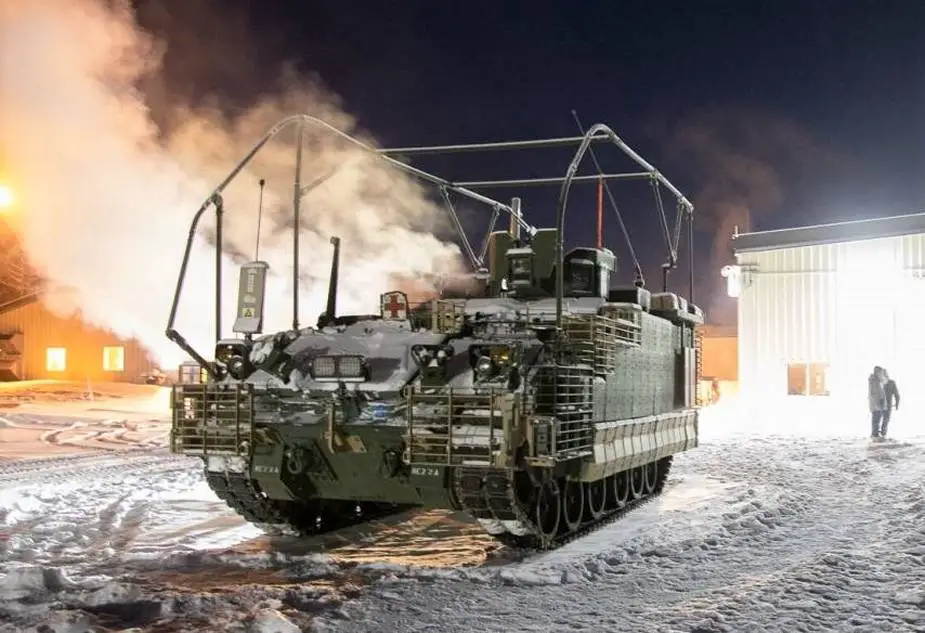Breaking news
New AMPV Armored Multi-Purpose Vehicle evaluated at US Army Cold Regions Test Center.
Last winter, a multi-month evaluation at U.S. Army Cold Regions Test Center in Alaska helped ensure the Army’s latest armored personnel carrier — the Armored Multi-Purpose Vehicle, or APMV — works even in the world’s coldest environments, Mark Schauer reports.
Follow Army Recognition on Google News at this link

The AMPV was submitted to a multi-month evaluation at U.S. Army Cold Regions Test Center in Alaska (Picture source: U.S. Army/Sebastian Saarloos)
The AMPV’s five variants — a general-purpose vehicle, mission command vehicle, mortar carrier, medical evacuation and medical treatment vehicles — have nearly 80% more interior volume than the M113 armored personnel carrier, and significantly more power, survivability and maneuverability. The cooling and electrical systems are also more robust to accommodate both existing and future upgrades. It boasts the same powertrain and suspension system as the Bradley Fighting Vehicle and M109A7 Paladin self-propelled howitzer, which eases maintenance and logistics challenges for all three vehicles in the field.
Though the weather this past winter at CRTC didn’t reach the jaw-dropping low temperatures that are typical, the variation didn’t faze the testers. “Extreme cold comes in windows, and it’s normally a scramble to try to get things into those windows,” said Stephan Krueger, test officer.
The coldest times still saw the mercury plunge below minus 35 degrees Fahrenheit, and the crew had much to do. The AMPV accumulated hundreds of miles on CRTC’s punishing road courses and undertook braking and acceleration tests at CRTC’s automotive test track. Further, the engine was subjected to cold starts in temperatures well below zero, oftentimes after having cold air blown on its engine from tubular fans to ensure a maximum of frigidness. The testers drove the vehicle for more than 1,000 miles across primary and secondary roads and cross-country trails.
“Normally when it is extremely cold, we prioritize cold starts,” said Krueger. “If it is extremely cold and we aren’t doing cold starts, I like to try to get a lot of durability miles in. Cross country is the slowest and takes the most time — the majority of our effort is getting those miles.”
A portion of the test involved a Soldier touchpoint where active-duty service members used the vehicle in the extreme cold. “The Soldiers who participated were from a Stryker brigade,” said Hannah Henry, test coordinator. “The AMPV is fairly similar to it, so we wanted to get their feedback.”
The touchpoint utilized the medical evacuation variant of the AMPV. “Their main focus was the ability to get patients into and out of the vehicle,” said Henry. “How slippery does the ramp get? Can you operate the medical equipment in the cold? They rode as patients in the vehicle and rated how they felt as the vehicle moved along.”
The AMPV has undergone extensive testing at all three of U.S. Army Yuma Proving Ground’s natural environment test centers — Yuma Test Center in Arizona; Cold Regions Test Center at Fort Greely, Alaska; and, most recently, at Tropic Regions Test Center in the jungle of Panama.


























